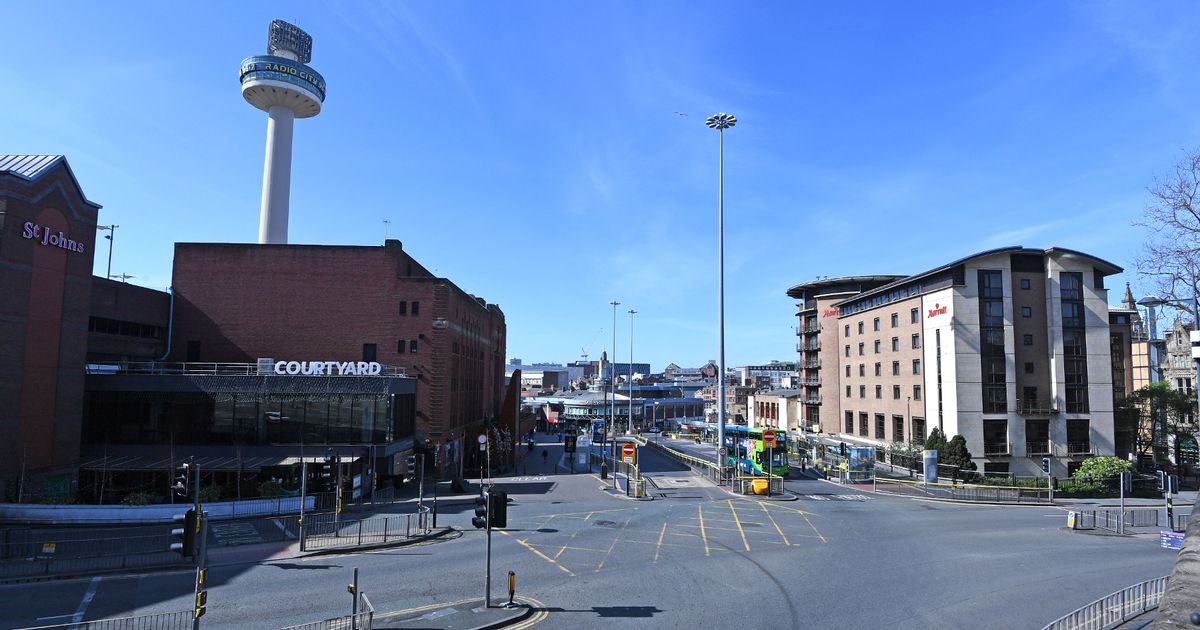The area is set to welcome one of the UK’s most popular brands within the new few months
16:17, 02 Aug 2025Updated 16:18, 02 Aug 2025
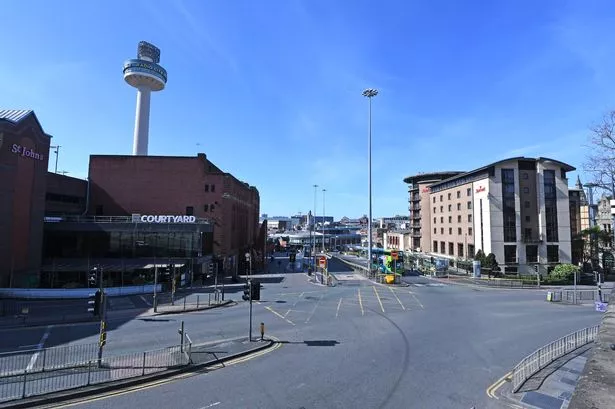 Queens Square, Liverpool(Image: Colin Lane/Liverpool Echo)
Queens Square, Liverpool(Image: Colin Lane/Liverpool Echo)
Liverpool’s Queen Square is looking totally different from the way it did at the start of this year. And fast forward to the end of 2025, and it will have a new look once again. Several businesses have said goodbye to the area while others have announced their arrival.
However, prior to recent developments, it’s fair to say the area stood ‘frozen in time’ with no significant changes. Located just a stone’s throw away from some of the city’s most popular cultural attractions, it should be a prime destination for businesses.
Within just minutes of Queen Square, you find yourself on the doorstep of the Liverpool Empire Theatre, the World Museum, the Central Library, the Walker Art Gallery and St George’s Hall.
The first change to Queen Square came in March when Nando’s announced it would be closing the doors of its longstanding restaurant.
The city venue opened more than two decades ago and it was the first site of the South-African inspired restaurant to launch in Liverpool. It shut for the final time in order to drastically upscale and relocate.
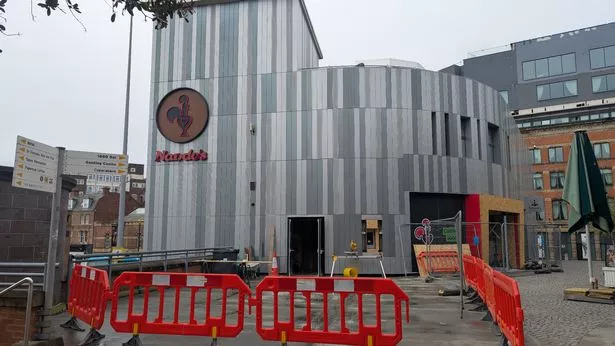 Construction is underway to reopen
Construction is underway to reopen
It is now found in the neighbouring venue that used to house Ice Stone Gelato. The business once claimed to be the fastest growing dessert chain in the North.
It has now permanently closed but first opened opened in 2017 with a massive 150-seater restaurant above burger chain Five Guys and Costa Coffee shop.
The Costa Coffee shop also shut this year. However, it is not all bad news as viral TikTok brothers Jacob and Harley Nelson announced they would be filling the space with SpudBros express.
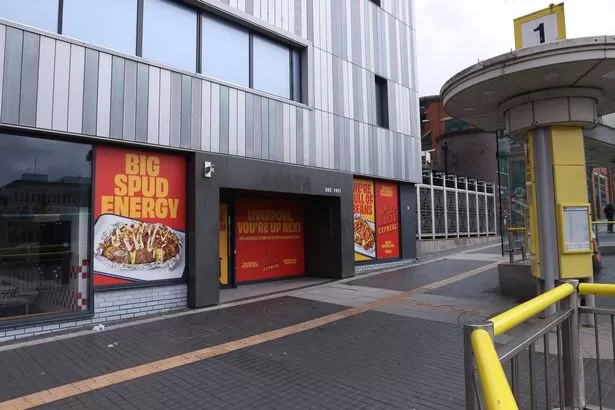 Signs on the site of the new Spud Bros store in Liverpool(Image: Liverpool Echo)
Signs on the site of the new Spud Bros store in Liverpool(Image: Liverpool Echo)
The Preston-born siblings, 29 and 22 respectively, have been stirring up excitement among their followers for some time about their latest venture. The two achieved international fame via social media, garnering more than five million fans across various platforms.
They’ve charmed the online crowd with personal vlogs that capture snippets of their everyday antics, particularly focusing on their mobile shop – affectionately known as their tram – where they whip up jacket potatoes.
Their entertaining clips have opened doors to working with some of social media’s top influencers, including Sidemen, MrBeast, Alex Warren and Will Smith.
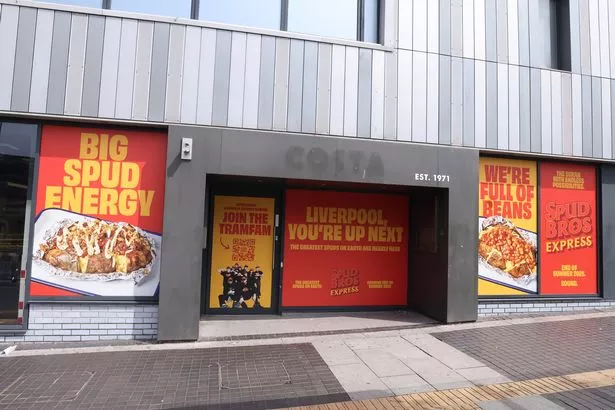 Signs on the site of the new Spud Bros store in Liverpool (Image: Liverpool Echo)
Signs on the site of the new Spud Bros store in Liverpool (Image: Liverpool Echo)
They are currently in the midst of transforming the “empty shell” of the Costa site into a new store which they claimed is going to be “bigger than London”. Ahead of opening, they sent the people of Liverpool an LFC-coded message.
Discussing the new venue in a TikTok video, Jacob said: “Guys, we have got the keys for the Liverpool store. Look where we are, right next to Five Guys, down below from Nando’s, let’s go take you in and have a look at it.
“This is so sick, I can’t believe it. It is so much bigger than the London store, we are so buzzing with it. This is literally an empty shell. We just picked up the keys today.”
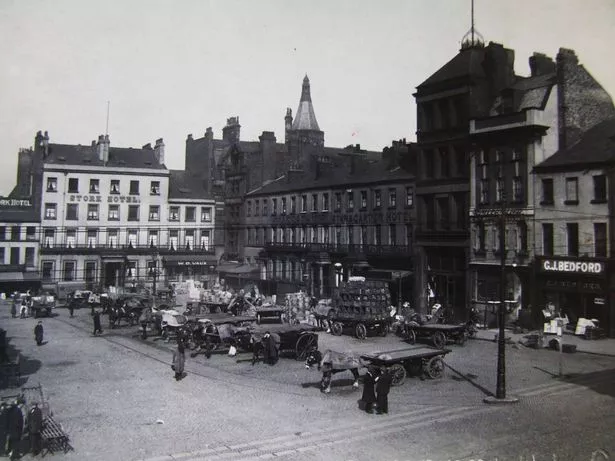 Early 20th century shot of Queen Square in Liverpool when used as a market place(Image: Not TM owned)
Early 20th century shot of Queen Square in Liverpool when used as a market place(Image: Not TM owned)
In line with all the changes, the ECHO’s nostalgic reporter Jess Molyneux look back at Queen Square and how it grew to be the place it is today. Decades ago, the city centre square looked barely recognisable as the area we have come to know today. Thought to be named after King George III’s Queen Charlotte, Queen Square has seen much change over time.
Before the bus station looked and operated as we know it today, in the 1990s the area was home to “bubble bus stops” and even had its own “sky bridge”. But if you go back even further, the square was a very different place, renowned for its vibrant fruit and veg market.
Certain generations will also remember Queen Square being home to a popular hotel which operated for around 90 years. But up until the late 1960s – Queen Square was also Liverpool’s unofficial gay quarter.
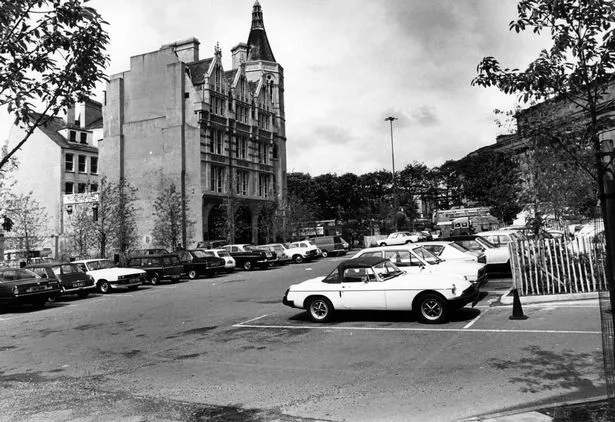 Stork hotel demolition, Queen Square. Liverpool 1st November 1976.(Image: Mirrorpix)
Stork hotel demolition, Queen Square. Liverpool 1st November 1976.(Image: Mirrorpix)
At the heart of Queen Square was the Stork Hotel, a favourite meeting place for actors from the nearby Royal Court and Playhouse theatres.
The Stork had originally been a mansion house belonging to John Roe, who gave his name to Roe Street, and opposite it in the middle of the square was Liverpool’s open air wholesale fruit and flower market. Local gay-friendly pubs in this miniature version of London’s Soho included the Roebuck, the Spanish House, the Magic Clock and the Royal Court.
But the building of the new St John’s Centre in the mid-1960s marked the beginning of the end for the area. The Roe Street Gyratory and bus station were in place by the early 1970s and the Stork was demolished.
It was in the late 1960s that the last of the wholesale market stalls moved out and ended what had been a unique and vibrant area of the city for good. The Queen Square area, surrounded by its warren of narrow cobbled streets, had been used by traders since the early part of the 19th Century to sell fresh fruit, vegetables and flowers.
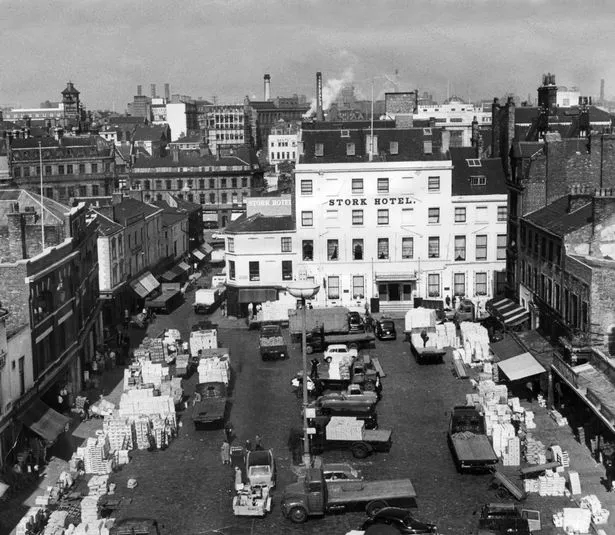 The Wholesale fruit and vegetable market held daily in Queen Square.
The Wholesale fruit and vegetable market held daily in Queen Square.
Many people remember the bustling market fondly, recalling the incredible colours and fresh smells they walked through each day. But by 1969, after a decade of wrangling between traders and the city council who wanted to clear the site to continue the development of the city centre, stall owners had started to move into the newly built Stanley Market in Old Swan.
As for the bus station – following the complete redevelopment of the Roe Street Gyratory the new Queen Square bus station was constructed in 1996. Demolition of the old Gyratory began in 1992.
The old Roe/Hood Street Gyratory had been known locally as the ‘bubble bus stops’ due to the curved plastic design of its shelters which took up the length of both Roe and Hood Street. In the early 1990s, the ECHO also campaigned for the demolition of the Roe Street walkway which spoiled the view of St George’s Hall. And, in August 1992, its demolition made the front page of the ECHO, under the headline “It’s Gone.”
